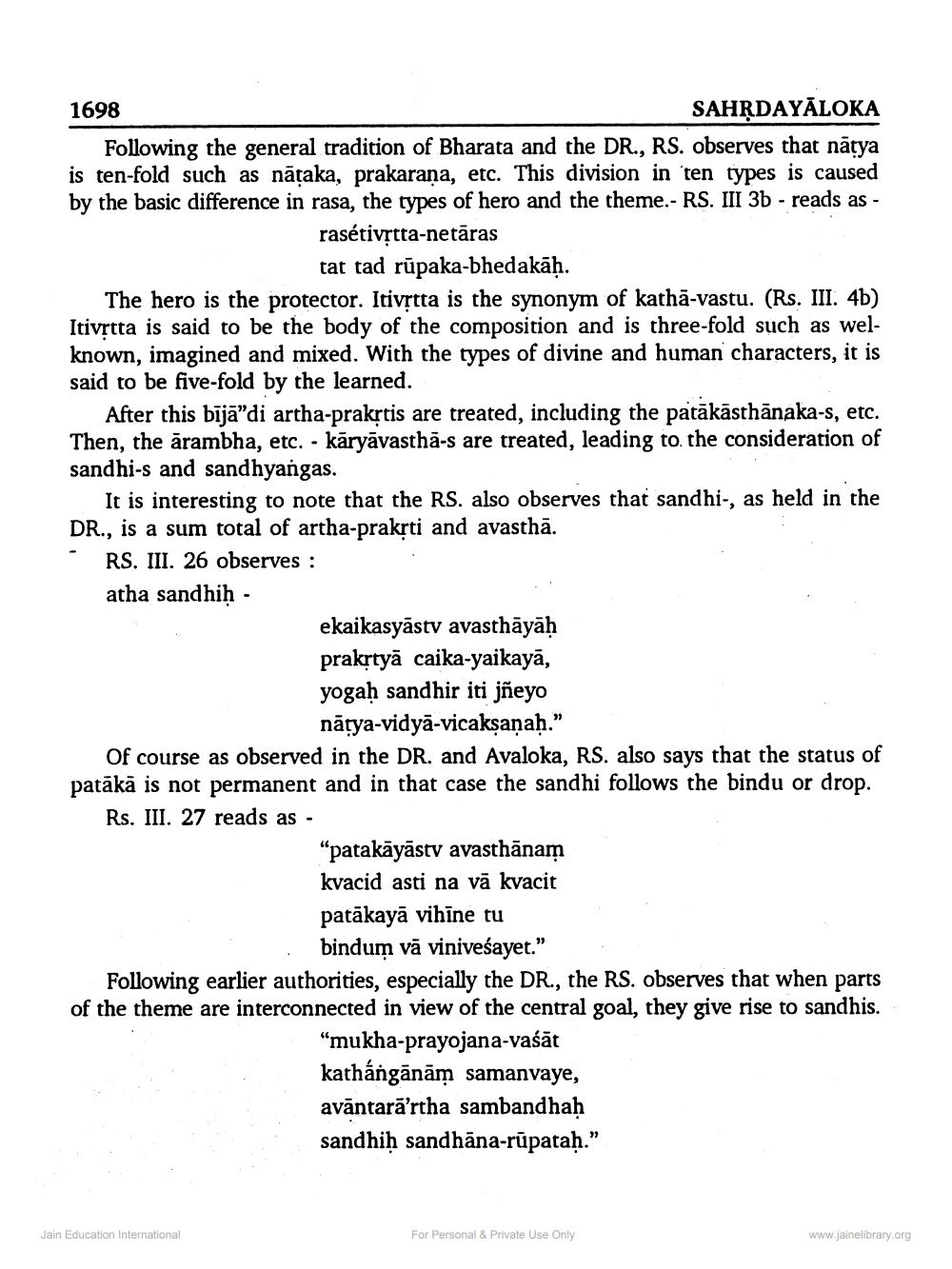________________
1698
SAHRDAYĀLOKA Following the general tradition of Bharata and the DR., RS. observes that nātya is ten-fold such as nātaka, prakarana, etc. This division in ten types is caused by the basic difference in rasa, the types of hero and the theme.- RS. III 3b - reads as -
rasétivstta-netāras
tat tad rūpaka-bhedakāḥ. The hero is the protector. Itivștta is the synonym of kathā-vastu. (Rs. III. 4b) Itivrtta is said to be the body of the composition and is three-fold such as welknown, imagined and mixed. With the types of divine and human characters, it is said to be five-fold by the learned.
After this bījā”di artha-prakstis are treated, including the patākāsthānaka-s, etc. Then, the arambha, etc. - kāryāvasthā-s are treated, leading to the consideration of sandhi-s and sandhyangas.
It is interesting to note that the RS. also observes that sandhi-, as held in the DR., is a sum total of artha-prakrti and avasthā.
RS. III. 26 observes : atha sandhiḥ -
ekaikasyāstv avasthāyāḥ prakstyā caika-yaikayā, yogaḥ sandhir iti jñeyo
nārya-vidyā-vicaksanaḥ.” Of course as observed in the DR. and Avaloka, RS. also says that the status of patākā is not permanent and in that case the sandhi follows the bindu or drop. Rs. III. 27 reads as -
"patakāyāsty avasthānam kvacid asti na vā kvacit patākayā vihine tu
bindum vā viniveśayet.” Following earlier authorities, especially the DR., the RS. observes that when parts of the theme are interconnected in view of the central goal, they give rise to sandhis.
“mukha-prayojana-vaśāt kathángānām samanvaye, avāntarā’rtha sambandhaḥ sandhiḥ sandhāna-rūpataḥ.”
Jain Education International
For Personal & Private Use Only
www.jainelibrary.org




